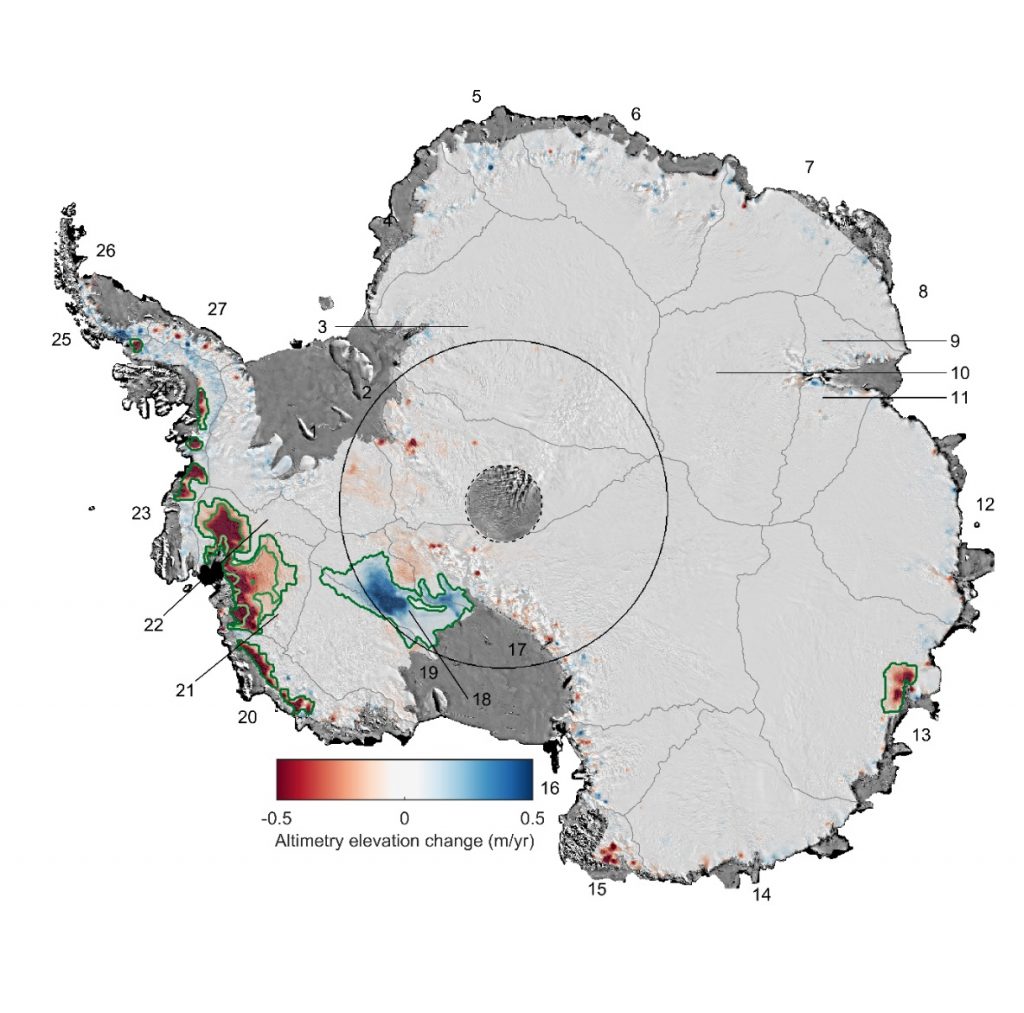Environment & Energy
Related: About this forumIn Less Than 30 Years, Thwaites & Pine Island Glaciers' Rate Of Ice Loss Up 500%
Yet another study has shown that glaciers in Antarctica are melting at accelerating rates. Almost 25 percent of the West Antarctic ice shelf is now thinning, and the Pine Island and Thwaites glaciers are losing ice at five times the rate they were in the early 1990s, CNN reported. “In parts of Antarctica, the ice sheet has thinned by extraordinary amounts,” study lead author and Leeds University Prof. Andy Shepherd told The Guardian.
The study, published in Geophysical Research Letters, comes four months after another study of the entire Antarctic continent found that it was losing ice at six times the rate it was 40 years ago. The latest study found that ice loss from both East and West Antarctica had raised global sea levels by 4.6 millimeters since 1992, according to CNN.
The study relied on 25 years of satellite data covering 1992 to 2017. The satellites were fitted with altimeters to measure height changes to the ice sheets. Researchers then used weather models to separate seasonal variation due to snow fall from melting and ice loss caused by long term climate change, BBC News explained.
“Using this unique dataset, we've been able to identify the parts of Antarctica that are undergoing rapid, sustained thinning ― regions that are changing faster than we would expect due to normal weather patterns,” co-head of the UK Centre for Polar Observation and Modelling (CPOM) and Lancaster University Environmental Sensing Reader Dr. Malcolm McMillan told BBC News. “We can now clearly see how these regions have expanded through time, spreading inland across some of the most vulnerable parts of West Antarctica, which is critical for understanding the ice sheet's contribution to global sea level rise.”
Link to tweet
EDIT
https://www.desmogblog.com/2019/05/16/antarctica-pine-island-thwaites-ice-melting-5-times-faster-90s
OKIsItJustMe
(19,938 posts)16 May 2019
Joint Release
AGU press contact:
Lauren Lipuma, +1 (202) 777-7396 (GMT-4), llipuma@agu.org
University of Leeds press contact:
Anna Harrison, +44 (0)113 34 34196 (GMT+1), a.harrison@leeds.ac.uk
Contact information for the researchers:
Andy Shepherd, University of Leeds (GMT+1), a.shepherd@leeds.ac.uk
WASHINGTON—In only 25 years, ocean melting has caused ice thinning to spread across West Antarctica so rapidly that a quarter of its glacier ice is now affected, according to a new study.
Scientists at the Centre for Polar Observation and Modelling (CPOM), based at the University of Leeds in the United Kingdom, have combined 25 years of European Space Agency satellite altimeter measurements and a model of Antarctica’s regional climate to track changes in snow and ice cover across the continent.
A new study in AGU’s journal Geophysical Research Letters finds Antarctica’s ice sheet has thinned by up to 122 meters in places, with the most rapid changes occurring in West Antarctica where ocean melting has triggered glacier imbalance.
This means the affected glaciers are unstable as they are losing more mass through melting and iceberg calving than they are gaining through snowfall.
…
…
This map shows changes to the Antarctic ice sheet’s thickness from 1992 to 2017. Warming ocean waters have caused the ice to thin so rapidly that 24 percent of glaciers in West Antarctica are now affected. In some places, glacier thinning has spread far inland.
Credit: Shepherd et al 2019/Geophysical Research Letters/AGU.
